As a double major in Molecular and Cellular Biology and Classics, I can say pretty confidently that I have a packed schedule. Between classes, homework, student groups, and my fraternity it’s hard to fit in downtime.
Now I know what you might be thinking: a frat guy who loves to bake? I live in a fraternity house with 13 other brothers, and I’m not at all ashamed to say that I indulge in baking breads almost every day (granted they don’t last long in my house for said reason).
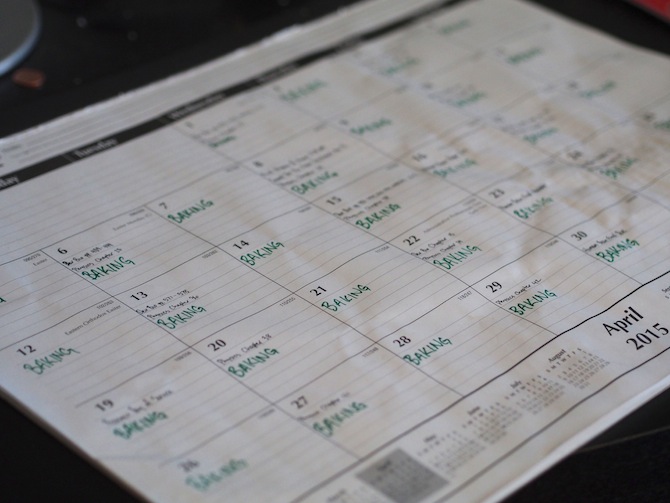
Photo by Emily Hu
Like I said, baking is by far my favorite activity, and unlike all my other obligations it’s pretty flexible.
You can study during rises and oven time…
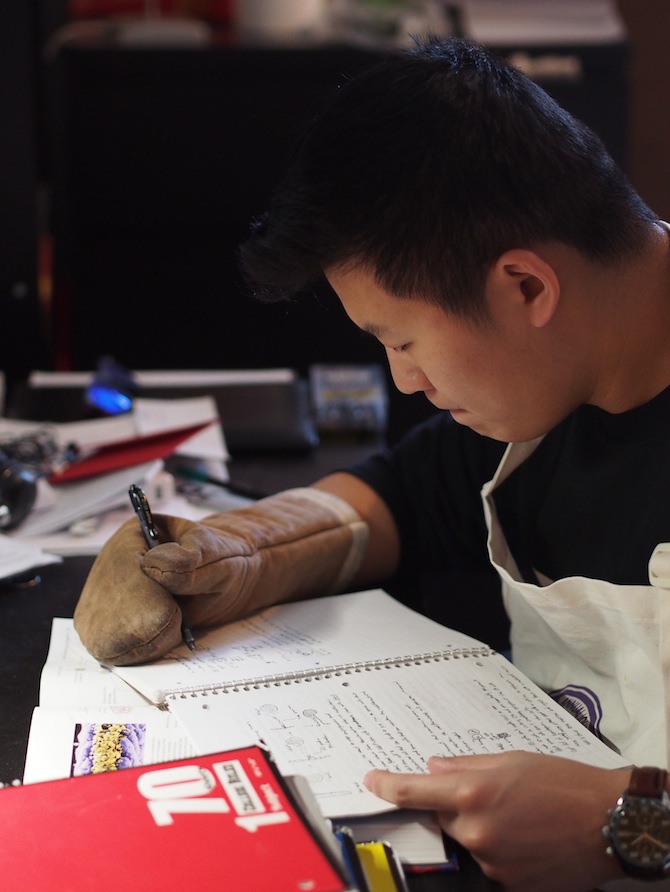
Photo by Emily Hu
crank out some serious workouts during 10-15 minute breaks…
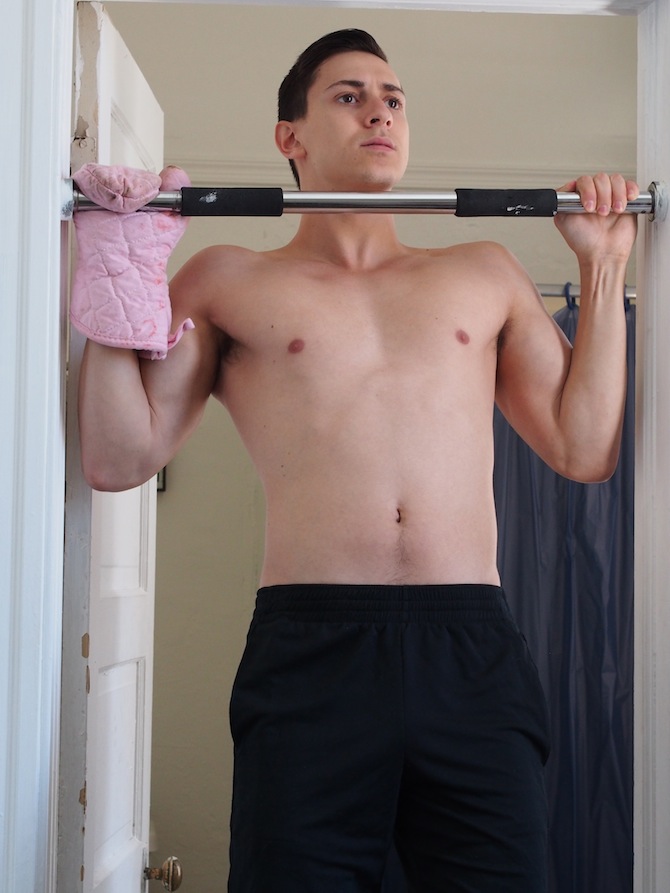
Photo by Emily Hu
or pregame at any point in the process.

Photo by Emily Hu
They Got Turnt And Then There Was Bread
Some guys ground up wheat, added water, put it on a fire, and made crackers. Then, another guy got hammered, put his beer in the gruel, forgot about it for a few days, and cooked it anyway.
Yes, that’s right. Like all good things on this earth, bread finally showed up to the party after a few drinks. Humanity’s been yeasting its breads ever since. Just about every culture bakes in some form, and some countries take baking so seriously that there are laws and standards governing nomenclature of certain bread (looking at you, France).
All this history and science (read: magic), by the way, comes from four common ingredients: flour, yeast, water, and salt.

Photo courtesy of youtube.com
Now It’s Your Turn
Making bread may seem intimidating, but is actually really easy. Like, really easy. I’m talking you can make it while moderately inebriated (not that I’ve tried it…). You could also make it before the night begins, with the added benefit that you come home to a freshly baked masterpiece. So much better than a 3 am Subway run.
I urge you to give it a try, sober or buzzed. It only takes four ingredients, and requires little space. Read: it’s cheap to make and perfect for dorms, small spaces, and frat kitchens alike.
Though many consider baking a creative outlet, there is some science that’s actually involved. These four ingredients don’t magically come together. It’s a marriage of biology, chemistry, and physics–as if you didn’t get enough of that in class.
No-knead bread is the 101 level in baking. Popularized by Mark Bittman of the New York Times, it’s patronizingly easy but astoundingly delicious.
Watch this video for the full recipe and steps. But just in case you’re still not sure where to start, here are some pro tips from the thousands couple of times I’ve made it.
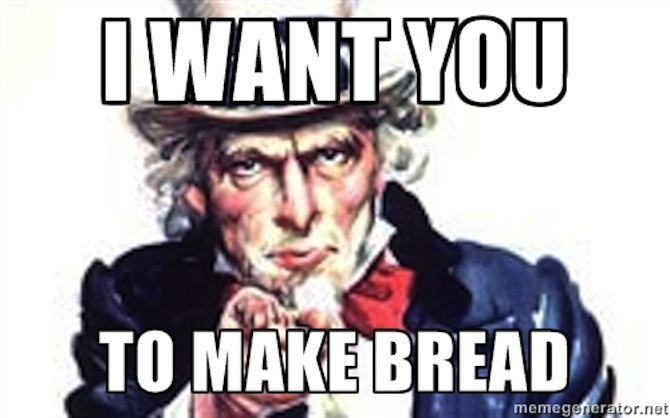
Photo courtesy of memegenerator.net
Pro Tips
- In addition to a large bowl and saran wrap, you only need one of the following: Dutch oven safe to 500ºF, a cast iron pan and some aluminum foil, or a Pyrex oven safe to 500ºF and aluminum foil.
- Don’t use anything that isn’t oven safe. Follow all instructions on your cookware.
- Play with your food: use your hands. Get used to having doughy hands.
- The cornmeal/wheat bran in the recipe isn’t necessary, although it’s a nice addition.
- If you don’t have any of the cookware, you could probably use a cookie sheet. No guarantees, but give it a shot.
- If you’re using Pyrex, make sure you preheat the bowl as well. Pyrex and glass don’t respond well to extreme changes in temperature (read: explode).
- *Should you choose to follow my (great) advice and attempt after a night of partying, please take caution near hot objects.*
And there you have it. Don’t be discouraged if it doesn’t turn out well. Eat your failures, I promise they’ll still be delicious as long as they aren’t burnt. Keep practicing and you too can make bread that’s this sexy.
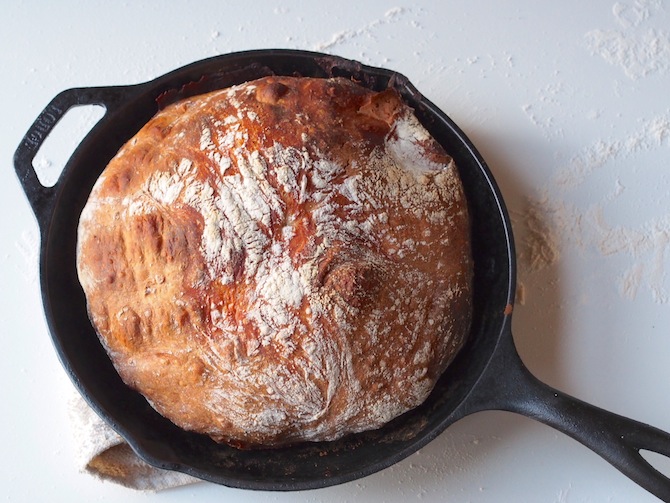
Photo by Emily Hu
Like this? We figured. Why don’t you pin it?
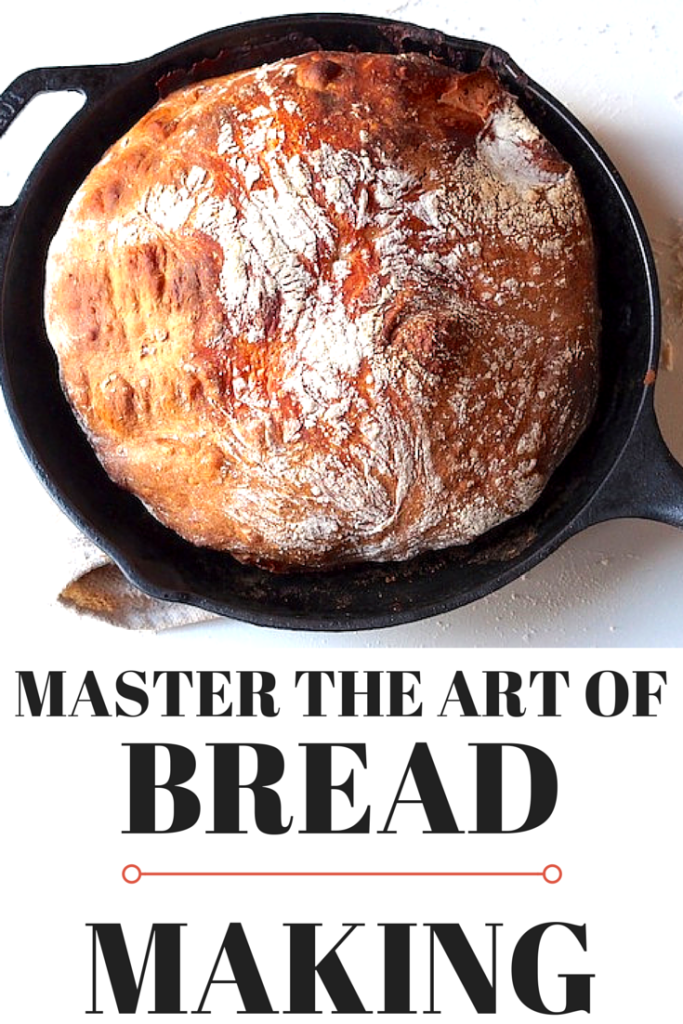
Check out these other delicious things to do that literally take no effort at all:

